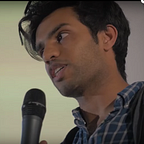Two years on.
For the last two years, we’ve been on a mission.
When we started, we were told that it couldn’t be done. We were told others before us had tried and failed; that we would give up long before we made any meaningful progress.
Indeed, we’ve hit challenges at every turn. We’ve patted ourselves on the back one day, only to wonder how we could be so naive the next. It’s been extraordinarily hard.
We started with a simple question: can we use technology to help people to be more physically active?
Technology, especially internet-enabled technology, has turned a lot of sectors upside down. However, some sectors have remained impervious to these effects, including the physical activity sector (a combination of public and private organisations involved in sports, fitness, wellbeing and health).
This is bad news, because the physical activity sector has an important task: to stop (and indeed, reverse) the rising levels of physical inactivity in the population. These facts highlight the scale of the challenge:
- Physical inactivity is the fourth leading cause of mortality globally, and causes more deaths than smoking
- In the developed world, lifestyle choices to do with physical activity and diet mean that for the first time in history, there’s a danger that today’s ten year olds could die younger than their parents
- The global economic costs are estimated at $53.8bn in 2013, the majority of that bill being footed by the public purse
As a society, not doing anything about this is simply not an option. The rising costs will literally cripple our health and social services.
But if it’s such an important issue, why has technology so far been unable to address it?
Early on in our journey, we (rather painfully) uncovered the reasons why:
- (1) We’re not all the same: one problem (the population isn’t physically active enough) is actually many problems, with many differently shaped solutions. What works to motivate you to be active will be different to what motivates others. Therefore, we need to encourage the creation and success of a whole range of different apps in order to motivate as many of the population as possible to be physically active. One size will not fit all.
- (2) We need to work together: these apps need information about the activities that their users can participate in, but they struggle to get that data by themselves.
To address these big challenges, we decided on an equally big solution: to build a new way to share data for the sector.
We want to remove barriers so that developers can easily build exciting new technologies to motivate people to be active. We want to propel the sector forward by making it easier to innovate within it. For this sector, we want technology to finally start winning.
The way we’re going about this is complicated in the detail, but extremely simple in summary:
- (1) We’re helping to create an open standard for sharing data about physical activities. This will in turn create an open market where developers can easily access the data they need to innovate. We’ve helped bring on board an amazing array of supporting organisations and early adopters, including Sir Tim Berners-Lee’s Open Data Institute. This is a world’s first for this type of data, and on its trajectory it could go on to be a global standard.
- (2) We’re building simple APIs within that open market that developers can use to create the unique technologies — from websites, to bots, to apps — that will form the ecosystem we need to engage the entire population in their physical health. Developers can focus on the end-user experience, without worrying about how to get the activity data.
Two years on, we keep that same vision: that we can help to get more people more physically active. Except fast forward a bit (and 5 office moves later) and we’re on the precipice of achieving the early stages of that vision:
- Supported by national UK policy, the open standard is gaining traction, with 42 Pioneers at last count;
- The sector is moving with us, with early adopters like British Cycling adopting the open standard and opening up their activity data;
- We’re facilitating collaborations around open data between leisure operators, county sports partnerships, and local authorities across the UK;
- We’re working with exciting organisations like the Olympic Park, bringing open data to high profile venues; and
- Our service is live across 3 counties (and counting), with developers from both the public and private sector building on top of the imin APIs.
There’s still some pretty big hurdles to overcome, but it’s important to recognise that we’ve come a long way. We’re proud of the last two years, and we’re overwhelmingly excited at the prospect of the next two years. Now it’s time to show the world that doing things in this new way can make a really big difference. If we can achieve our vision, we’ll change the wellbeing for millions of people worldwide and create a better future for the next generation.
Technology has been a serious force for good in lots of sectors. For some reason, the physical activity sector missed out. We’re here to change that.
If you’d like to get involved, we’re actively looking for the right people to help us tackle the challenges that lay ahead. We need your help.
